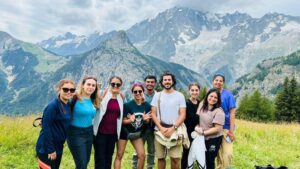Abstract/Description
Climate change poses a grave threat to the livelihood of high-altitude dwellers, most of whom constitute the local mountaineering workforce in Nepal. These Nepali mountain climbers expressed serious concerns over unpredictable weather, and fast melting of ice and glaciers, making their job more vulnerable to injuries and fatalities, especially in Khumbu Icefall that seems to be expanding higher up on Mount Everest. As a consequence, with new crevasses and seracs appearing between higher camps, the number of deaths has increased in this section where massive ice pinnacles are in a constant state of motion, further threatening the local communities that rely on mountaineering as their source of income. High-altitude mountaineering is undertaken by different ethnic groups, including the Sherpa, who constitute a majority of the local workforce. When I first visited Nepal in June of 2019, I had not anticipated climate change to be a subject of discussion, however, during my conversations and interviews with Nepali high-altitude climbers over the years, I realized that all of them are becoming increasingly aware of the erratic weather patterns, receding snow, garbage mismanagement on the mountain, and are greatly concerned as to how this is already changing the way commercial expeditions are being conducted. In making use of the local narratives in understanding the experience of high-altitude work, and recognizing the threats that climate change poses to the livelihood of the local Nepalis, I see myself being increasingly drawn toward studying how occupations in the future will be impacted by climate change. This also includes studying the reciprocal relationship between human and mountain. In this light, it becomes important to ensure sustainable tourism practices across different provinces, keeping in mind the fragile physical geography of Nepal which is extremely vulnerable to climate-change induced catastrophes. The paper will inquire into concrete solutions that can be implemented in order to help mitigate the risk in high-altitude mountaineering caused by global climate change.

